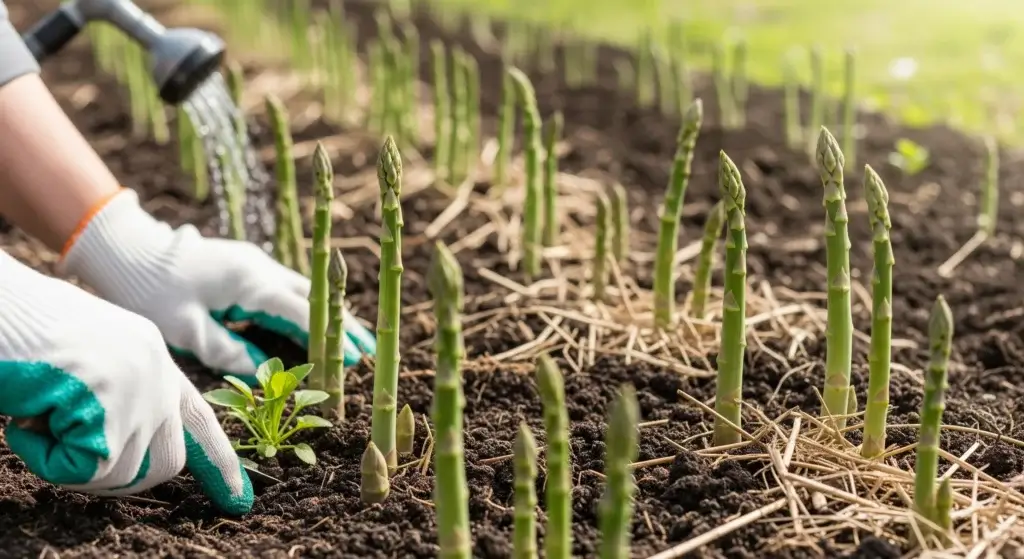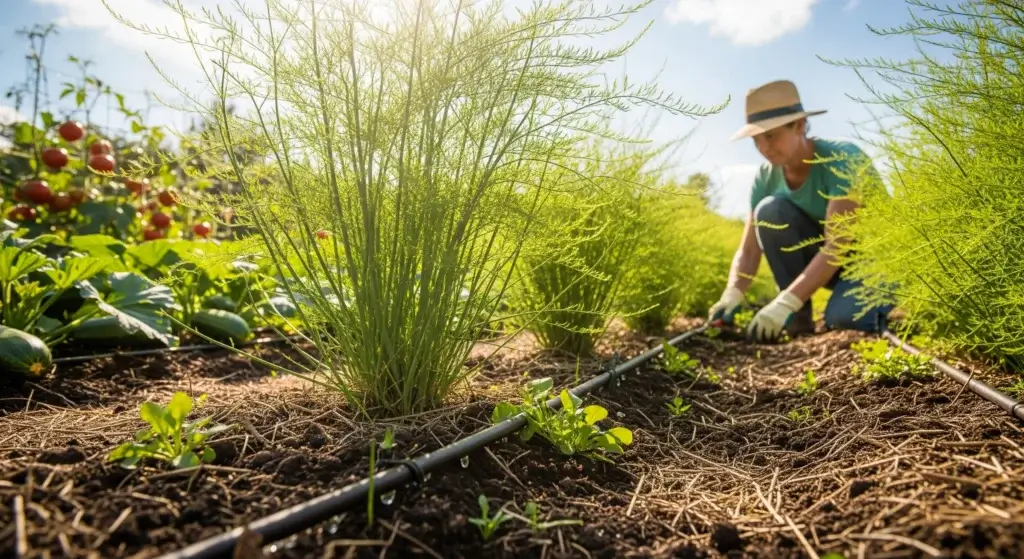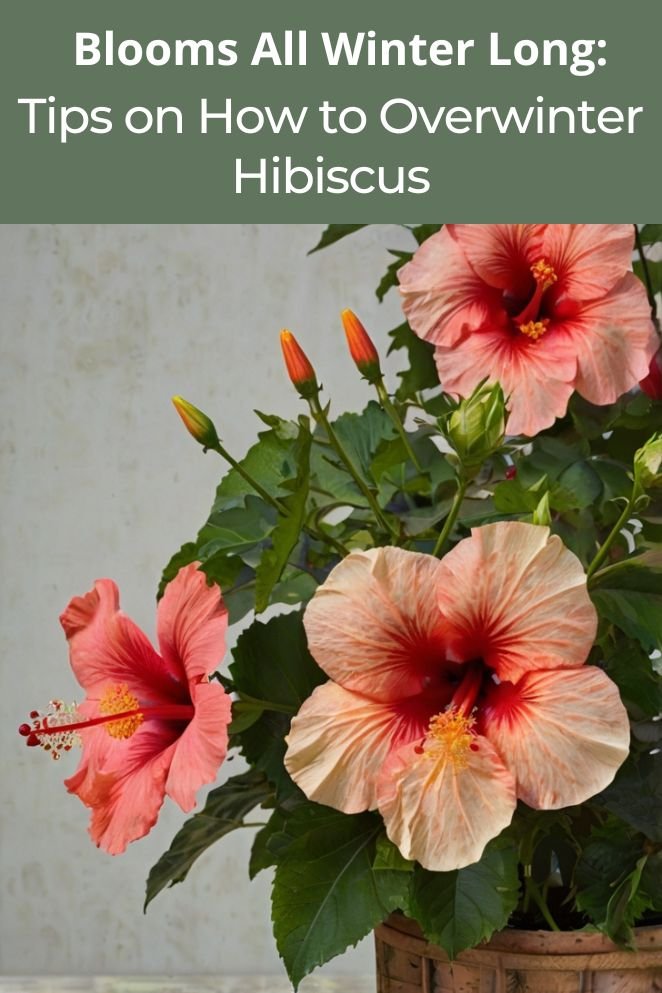
When living in regions with cold seasons, it is necessary to overwinter hibiscus plants.
Frost and cold temperatures are not good for the tropical varieties of hibiscus. Without enough attention, they may be damaged or even die.
For many future seasons, protect your plants and see how beautiful they can become by having a good grasp and implementation of efficient methods of overwintering.
Methods of Overwintering Hibiscus
There are several methods to overwinter hibiscus, each suited to different environments and types of hibiscus.
The main strategies include indoor overwintering, outdoor overwintering, and an alternative method for those with specific needs or constraints.
Indoor overwintering
Overwintering your hibiscus indoors ensures it survives the colder months and thrives when warmer weather returns.
Here’s a step-by-step guide to help you through the process:
Choose the tight time
Start preparing to move your hibiscus indoors before the first frost hits.
This usually happens when nighttime temperatures drop consistently below 50°F (10°C).
Bringing it in early helps avoid exposure to chilly weather that could harm the plant.
- Read also: Yellow Leaves on Hibiscus: Causes and Treatments Tips
- Read also: A Beginner’s Guide: Tips on How to Overwinter Begonias
Inspect and treat
Before bringing your hibiscus indoors, carefully inspect it for any pests or signs of disease.
Treat any issues promptly to prevent them from spreading to your other indoor plants.
You can use insecticidal soap, a gentle and effective treatment for most pests.
Prune and repot
Trim your hibiscus to manage its size and encourage healthy growth.
If the plant has outgrown its current pot, consider repotting it into a slightly larger container with well-draining potting mix.
Good drainage is crucial to prevent waterlogging and root rot.
Find the ideal indoor location
Choose a bright and sunny spot indoors for your hibiscus.
A south-facing window works best because it provides at least 6 hours of sunlight daily, which hibiscus plants need to thrive.
If natural light is limited, supplement with grow lights to ensure your plant gets enough light.
Maintain proper conditions
To keep your indoor hibiscus healthy during winter, maintain these optimal conditions:
- Temperature: Keep the indoor temperature consistently between 60-75°F (15-24°C). Avoid placing the plant near drafts or heating vents.
- Humidity: Hibiscus plants prefer humid environments. Increase humidity around the plant using a humidifier or by placing a tray filled with water and pebbles nearby.
- Watering: Water your hibiscus when the top inch of soil feels dry to the touch. Be cautious not to overwater, as this can cause root rot.
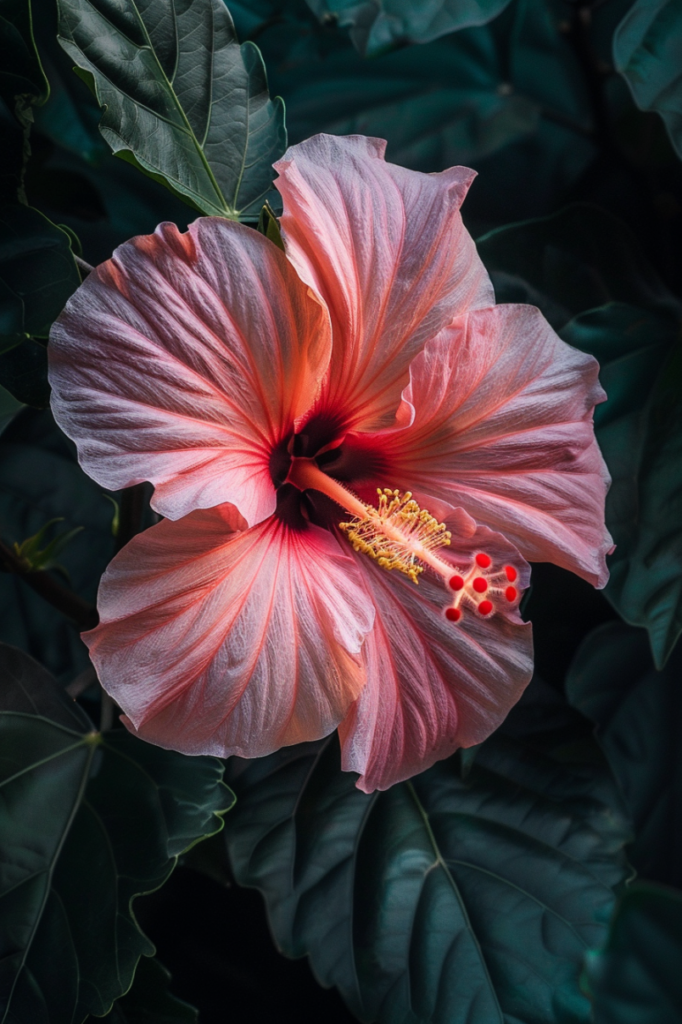
Outdoor overwintering
Overwintering your hibiscus outdoors requires careful preparation to protect the plant from cold temperatures.
Here’s a straightforward guide to help you:
Hardy Hibiscus vs. Tropical Hibiscus
- Hardy Hibiscus: These varieties can withstand colder temperatures and are suitable for outdoor overwintering.
- Tropical Hibiscus: These plants are sensitive to cold and need to be brought indoors or heavily protected to survive winter outdoors.
Mulching
- Purpose: Apply a thick layer (about 3-4 inches) of mulch around the base of your hibiscus plant.
- Benefits: Mulch helps insulate the roots, keeping them warmer and protecting them from freezing temperatures.
- Materials: Use organic mulches like straw, leaves, or pine needles. These materials decompose over time, enriching the soil.
Pruning and covering
- Pruning: Trim the hibiscus plant back to about 12 inches from the ground before winter sets in. This reduces the plant’s size and helps it conserve energy during the dormant period.
- Covering: Use burlap or a frost cloth to cover the pruned hibiscus. This extra layer provides insulation and shields the plant from harsh winter conditions.
Location and wind protection
- Choosing a location: A location near a south-facing wall is ideal because it receives more sunlight and warmth, which are crucial during winter.
- Wind protection: Positioning the plant near a wall also helps protect it from strong winter winds, which can damage delicate branches and foliage.
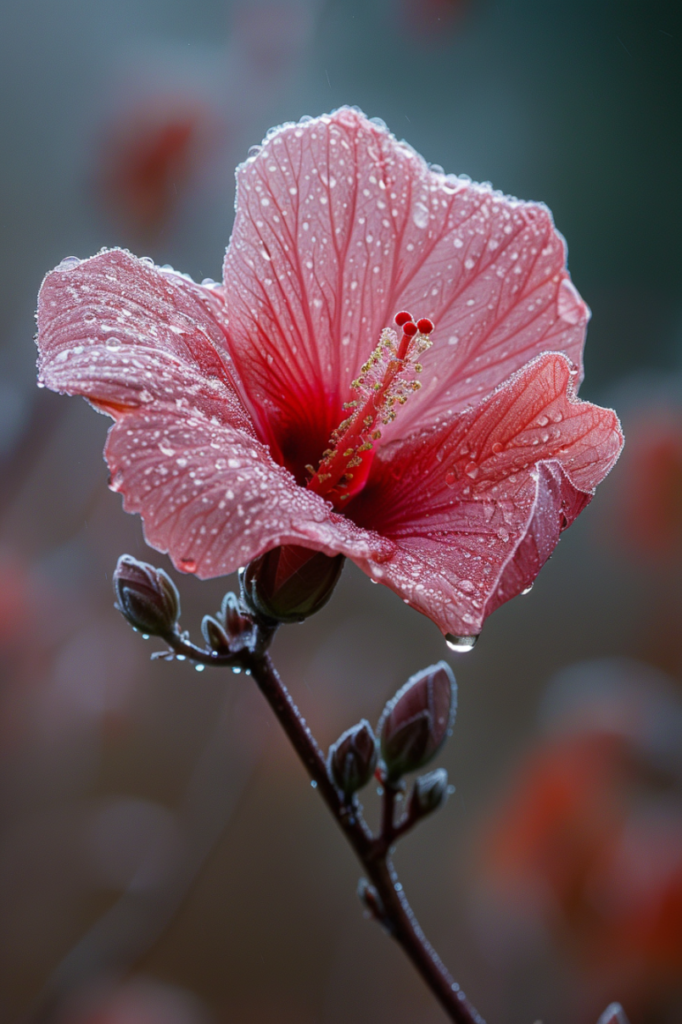
When to Prepare for Overwintering?
Preparing your hibiscus plants for overwintering is crucial to ensure they survive the colder months and thrive when spring returns.
It’s best to start preparing before the outdoor temperature consistently drops below 60°F (15°C). Here’s what to look for and understand:
Leaf drop
When hibiscus plants begin to shed their leaves, it’s a natural response to cooler temperatures.
This leaf drop indicates that the plant is entering dormancy, a period of rest where growth slows down significantly.
During dormancy, the plant conserves energy and focuses on maintaining its core functions.
Stem hardening
As temperatures cool, you may notice that the stems of your hibiscus plants become firmer and more rigid.
This process, known as stem hardening, helps the plant prepare for the colder weather ahead.
Hardened stems are better able to withstand frost and freezing conditions without being damaged.
Reduced growth
Another sign that your hibiscus is preparing for overwintering is a noticeable slowdown in growth.
The plant may produce fewer new leaves or flowers and may not require as much water or nutrients as it did during the growing season.
This reduction in growth is part of the plant’s natural cycle to conserve resources and survive through winter.
Alternative Overwintering Method
Dormancy
Dormancy is like a hibernation period for plants during winter.
It’s a natural state where the plant slows down its growth and conserves energy to survive colder temperatures.
Steps to induce dormancy
- Reduce watering: As the weather cools in late fall, gradually reduce how much water you give to your hibiscus. This helps signal to the plant that it’s time to enter dormancy.
- Find a cool, dark spot: Choose a suitable location, ideally with temperatures between 45-55°F (7-13°C).
- Minimal care needed: During dormancy, your hibiscus requires minimal attention. Water sparingly to prevent the soil from drying out completely.
- Preparing for spring: When winter ends and temperatures start to rise, begin transitioning your hibiscus out of dormancy.
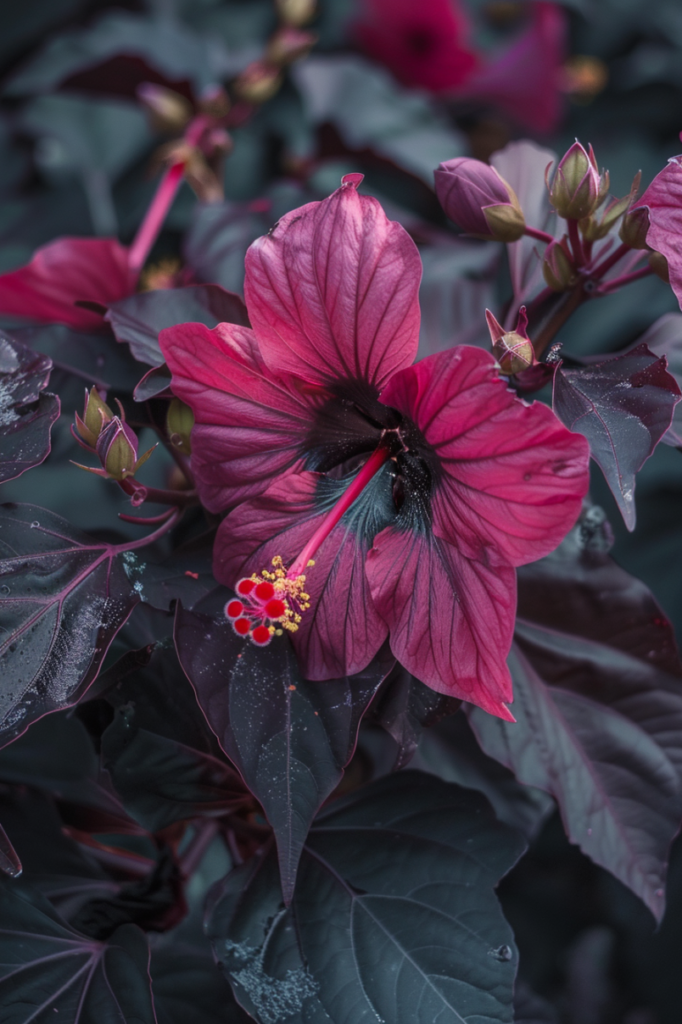
- Read also: How to Overwinter Mandevilla: A Step-by-Step Guide
- Read also: A Guide for Lush Blooms! Tips on How to Prune Hydrangeas
Conclusion
Successfully overwintering hibiscus requires understanding the plant’s needs and providing appropriate care.
Whether you choose indoor or outdoor methods, or opt for inducing dormancy, your hibiscus can survive and thrive through the winter months.
By following these guidelines, you’ll ensure a healthy and vibrant hibiscus plant ready to bloom again come spring.
FAQs
Hardy hibiscus varieties can survive outdoors with proper protection, but tropical hibiscus should be brought indoors or heavily insulated to survive cold temperatures.
Water your indoor hibiscus when the top inch of soil feels dry. Be careful not to overwater, as this can lead to root rot.
Place your indoor hibiscus in a bright, sunny spot, preferably near a south-facing window. If natural light is insufficient, use grow lights.
Use mulch, prune the plant, and cover it with burlap or a frost cloth. Position the plant in a sheltered location to reduce exposure to harsh winds.

